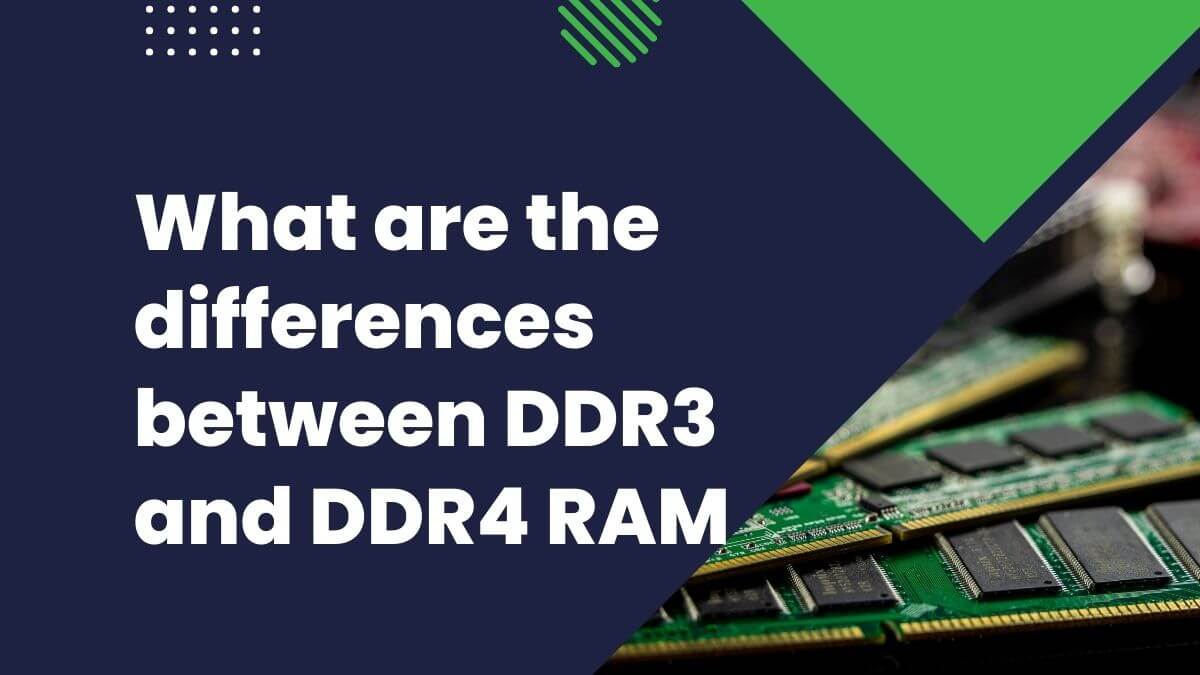What are the differences between DDR3 and DDR4 RAM?
Most people don’t think about the type of RAM in their computer, but if you’re a power user or gamer, you know that there’s a big difference between DDR3 and DDR4 RAM.
This article will take you through the differences between DDR3 and DDR4 memory on the desktop. As we look at it, you will see that the differences are primarily the clock frequency at which the memory runs and the voltage that the DDR4 memory requires. So what’s the difference in speed, and is it worth upgrading?

DDR 3 and DDR 4
The major differences between DDR4 and its predecessor, DDR3, are the wider range of clock rates and timings available, lower power consumption, and decreased latency. DDR3 has four distinct clock speeds (i.e. how quickly the RAM can read or write data): 1333Mhz, 1600Mhz, 1866Mhz, and 2133Mhz, with 2133Mhz being the highest. Technically, 800Mhz and 1066Mhz processors are still available, but manufacturing has shifted to the newer, faster models.
The first difference between the two is memory. A desktop RAM comes with two sticks of RAM, which, for DDR3, are 16GB or 32GB sticks. We can call them the x16 or x32 memory (because they are in the form of x16 or x32 bits). There is a difference in DDR3 and DDR4 memory, and this difference has the potential to be a very good one.
DDR3 only supports x16 memory (16 GB of DDR3 memory is x16, and its memory address is 16 bits wide). DDR4, on the other hand, supports a larger number of bits. DDR4 supports x16 or x8 memory (because the address on a memory card with a 16GB capacity is 16 bits, 16 or 8). DDR4 also supports x4 memory, or x8 memory, where there is four bytes of data transferred for each address.
DDR4 on the other hand seems to have no upper clock speed limit, at least not one that manufacturers have been able to achieve. Everyone thinks they’ve gone as fast as they can go, but then someone goes faster and raises the bar for exceptional performance. G.Skill, the company that makes RAM, has unveiled a new kind of crazy in the form of a 128GB DDR4 system with four 3000Mhz-clocked 32GB sticks, while the 8GB G.Skill TridentZ series is already available at 4266Mhz.
DDR4 RAM works more effectively at only 1.2v, a level that may be lowered as low as 1.05v depending on the manufacturer and the quantity of RAM. This is in contrast to DDR3 RAM, which consumes anywhere from 1.5 to 1.975 volts in overclocked computers. At 1.35v, the DDR3L standard (the “L” stands for “Low-voltage”) makes some progress in this area, but the increased overall efficiency of DDR4 is a significant improvement.
That’s a fancy way of saying faster transfer rates in DDR4 at lower voltages, resulting in longer-term system stability. It lowers the risk of your RAM burning out when you’re overclocking, as well as the overall load that demanding applications may have on your computer.
If you just want to decide whether it is DDR3 RAM or DDR4, you can observe the difference in their physical structure as follows:
What else is different?
The other major difference between DDR3 and DDR4 is voltage. Because the chips can run at higher speeds, the voltage required to run the chip is less. To run a DDR4 memory at full capacity, the voltage required to power the memory will be 1.2V per 1GB (12 volts per 1,000 million). For DDR3 memory, this will be 1.5V per 1GB.
This is because DDR3 can handle the memory at up to a maximum of 18V. This is actually quite a high voltage, but with the increase in speed, you need to power the memory at lower voltages.
If you’re running the memory at 1.5V per 1GB, you’ll need 3.5 volts of voltage for the memory to operate. If you’re using 1.2 volts, you’ll only require 3 volts.
The benefit of running the memory at lower voltages is that it means the power consumption will be less. It also means that the memory card will have a higher tolerance for a number of reasons. First, it will mean that the memory runs at lower voltages which helps with the heat. The DDR3 memory used 1.2 volts of voltage. This is more than needed for the DDR3 memory. This is the reason that memory cards used to have larger connectors.
The newer DDR4 memory cards come with a much smaller connector but require less voltage. This means that the card will take less power and this means that the card will run cooler.
The other thing that makes DDR4 memory a better choice than DDR3 memory is that DDR3 memory is very sensitive to dust. The memory needs to be clean, dust free, and free from humidity in order for memory to work properly.

